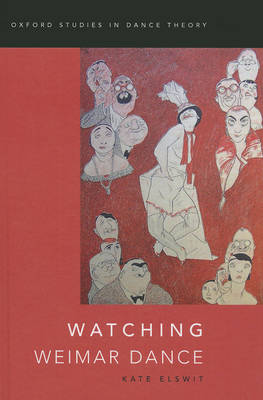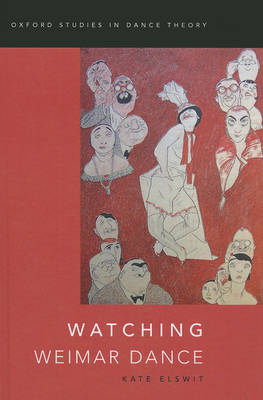
- Afhalen na 1 uur in een winkel met voorraad
- Gratis thuislevering in België vanaf € 30
- Ruim aanbod met 7 miljoen producten
- Afhalen na 1 uur in een winkel met voorraad
- Gratis thuislevering in België vanaf € 30
- Ruim aanbod met 7 miljoen producten
Zoeken
€ 219,95
+ 439 punten
Uitvoering
Omschrijving
Watching Weimar Dance asks what audiences saw on stages from cabaret and revue to concert dance and experimental theatre in the turbulent moment of the Weimar Republic. Spectator reports that performers died or became half-machine archive not only the physicality of past performance, but also the ways audiences used the temporary world of the theatre to negotiate pressing social issues, from female visibility within commodity culture to human functioning in an era of increasing technologization. Archives of watching a range of performance artists, including Oskar Schlemmer, Valeska Gert, Kurt Jooss, Mary Wigman, Bertolt Brecht, Anita Berber, and the Tiller Girl troupes also revise and complicate our understanding of Ausdruckstanz as the representative dance of this moment in Germany. They further reveal how such practices came to be imbued with different significance in the postwar era as well as in transnational context. By bringing insights from theatre, dance, and performance
studies to German cultural studies, and vice versa, Watching Weimar Dance develops a culturally-situated model of spectatorship that not only offers a new narrative but also demonstrates new methods for dance scholarship to shape cultural history.
studies to German cultural studies, and vice versa, Watching Weimar Dance develops a culturally-situated model of spectatorship that not only offers a new narrative but also demonstrates new methods for dance scholarship to shape cultural history.
Specificaties
Betrokkenen
- Auteur(s):
- Uitgeverij:
Inhoud
- Aantal bladzijden:
- 290
- Taal:
- Engels
- Reeks:
Eigenschappen
- Productcode (EAN):
- 9780199844814
- Verschijningsdatum:
- 14/08/2014
- Uitvoering:
- Hardcover
- Formaat:
- Ongenaaid / garenloos gebonden
- Afmetingen:
- 239 mm x 160 mm
- Gewicht:
- 657 g

Alleen bij Standaard Boekhandel
+ 439 punten op je klantenkaart van Standaard Boekhandel
Beoordelingen
We publiceren alleen reviews die voldoen aan de voorwaarden voor reviews. Bekijk onze voorwaarden voor reviews.











